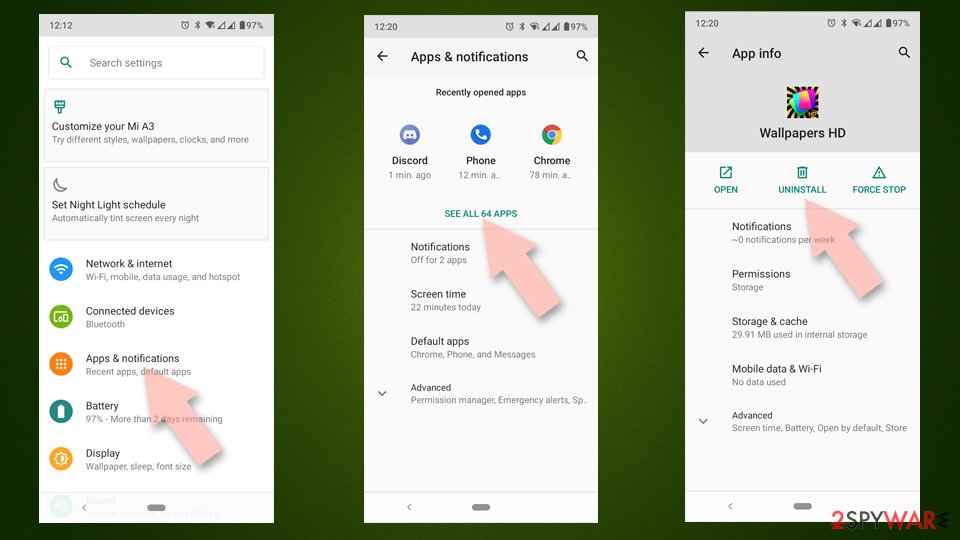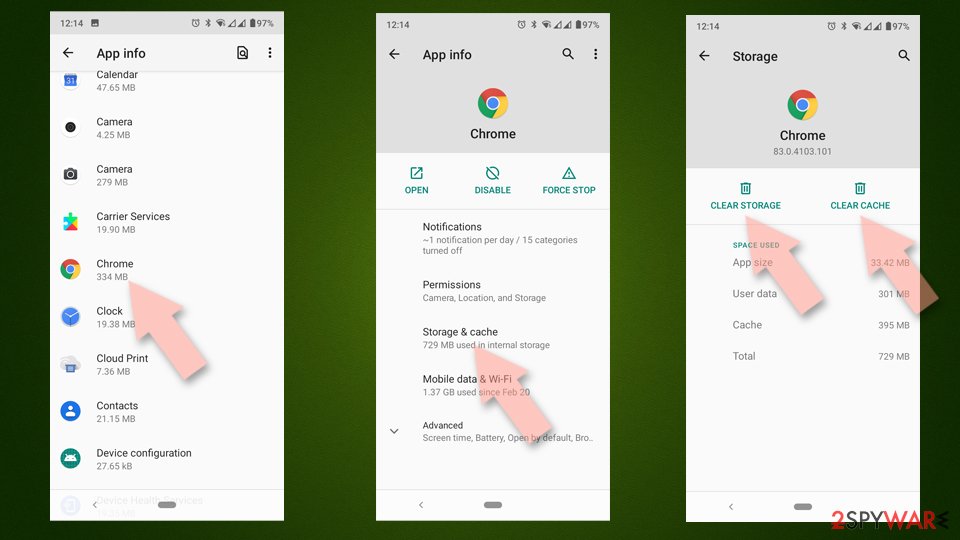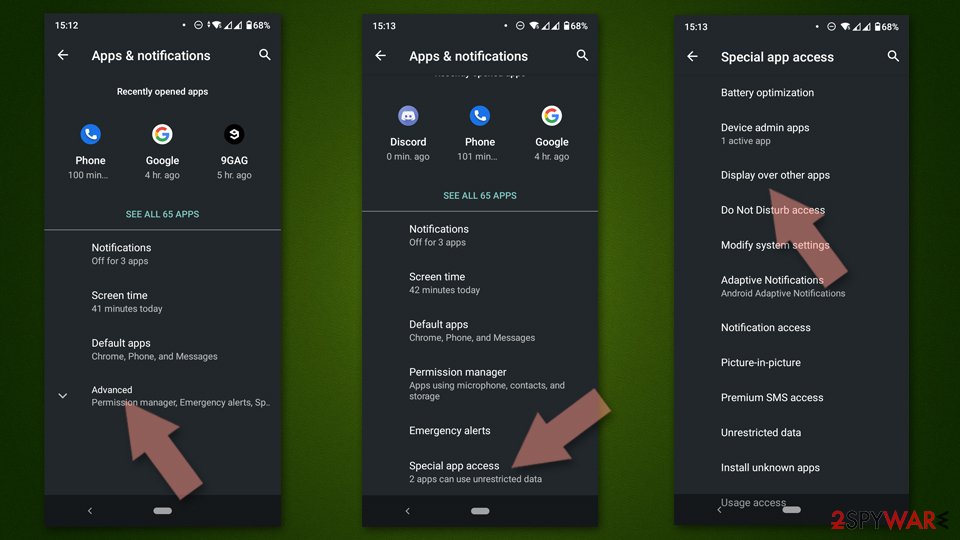Ro01.biz (Chrome, Firefox, IE, Edge) - Virus Removal Instructions
Ro01.biz Removal Guide
What is Ro01.biz?
Ro01.biz – a set of rogue websites seeking to deliver ads directly to your screen or desktop
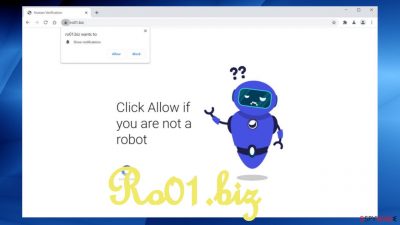
Ro01.biz is a push notification virus site that tries to trick you into subscribing to its notifications. It can deceive you into pushing the Allow button by showing various prompts, e.g., to prove that you're not a robot, watch a video, enter the site, continue downloading a file, confirm that you're over 18 years old, etc.
As soon as you accept Ro01.biz notifications, you will be redirected to an affiliated site, and ads will start popping up directly on your computer desktop or phone screen. Shady website's prompts and sites you will be visiting depend on your geolocation.
If you're redirected to this or similar push notification virus sites, you have adware installed on your device. These PUPs gain revenue from advertising various portals, with some of them being malicious. This article explains how similar threats are delivered, their symptoms, risks, and removal options.
| name | Ro01.biz |
|---|---|
| Type | PUP, adware, redirect virus |
| IP address | 128.199.45.147 |
| Other site variations | Ro02.biz; Ro03.biz; Ro04.biz; Ro05.biz; Ro06.biz |
| Purpose | Trick people into allowing notification which enables it to deliver ads directly to your desktop or screen |
| Symptoms | Redirects to unknown sites with dangerous contents, slower browsing speed, irritating ads showing up |
| Risks | Other PUP installation, malware[1] infections, financial losses, privacy issues |
| Distribution | Fake Flash Player updates, software bundling, deceptive ads |
| Removal | You can eliminate any cyber threat and keep your device secure by using a trustworthy anti-malware tool |
| System Recovery | If an infection alters system files, that will result in slower performance, BSoDs, freezing, etc. You should fix any system-related issues with a powerful FortectIntego system repair tool |
Ro01.biz is one of many shady sites bearing almost identical names. The other variations differ only by one numeral at the end, e.g., Ro02.biz; Ro03.biz; Ro04.biz, etc. If you ever land on a site like this, please don't accept their push notifications, as you will be bombarded with ads.
When Ro01.biz virus is in your phone or computer system, you will suffer from two things – deceptive ads and sudden redirects. Its ads will come in the form of notifications and will pop-up constantly on the top-right or bottom-right corner of your desktop or directly on your cell phone screen.
Apart from being annoying, Ro01.biz ads pose threats, as in most cases, they have nothing in common with the websites you'll end up on. An ad for an amazing deal on a new laptop, or a software sale, could redirect you to websites with gambling, fake updates, potentially unwanted programs, malware, porn, gaming, etc.
And that's where it gets risky as these websites might try to push other PUPs, try to draw out private info (banking credentials, SSNs, etc.), lure you into gambling, install malware, and so on. Furthermore, through Ro01.biz redirect, you might be forced to visit such sites, as new tabs with them could open out of the blue.
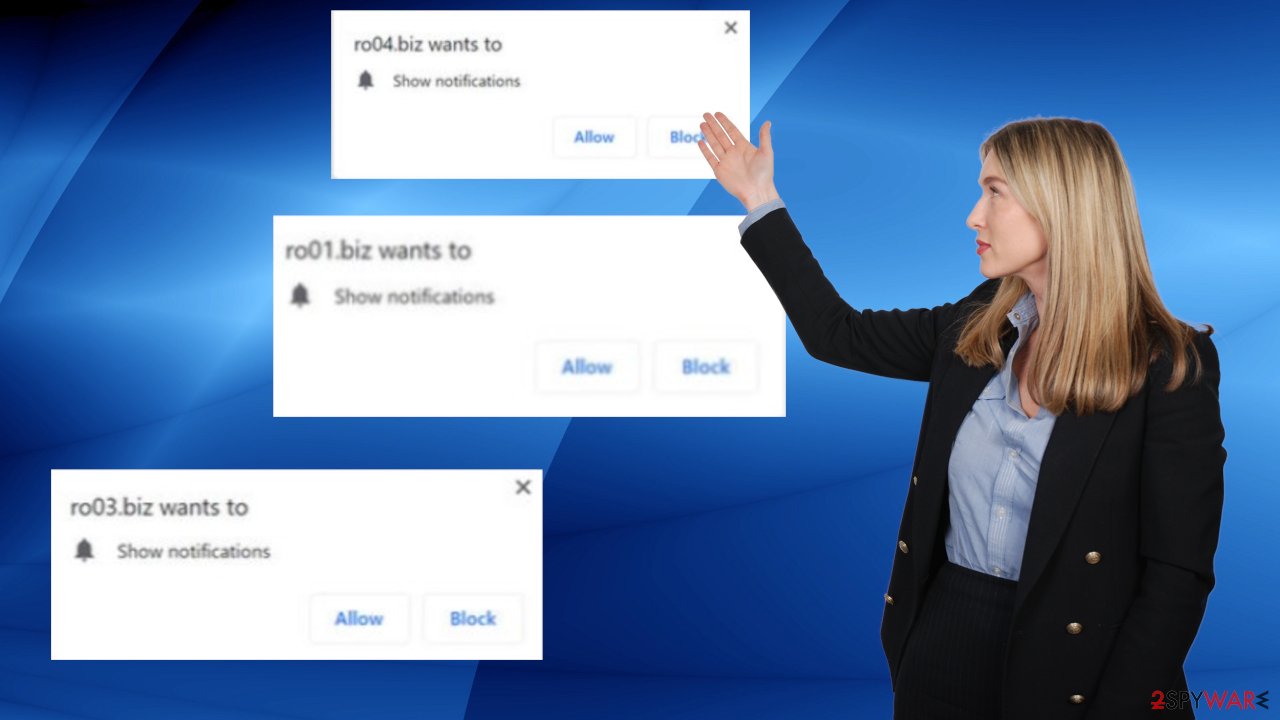
And last but not least, if you didn't type in Ro01.biz address manually, in other words, if you didn't voluntarily visit this site, then there's a very good chance that you have an adware infection. It can also cause redirects, display misleading ads, and more.
Thus you need to scan your device with security tools immediately. According to many user reviews, the best free anti-malware software for Ro01.biz removal is either SpyHunter 5Combo Cleaner or Malwarebytes. All you need to do is download it and run a full system scan after installation. The AV engine will do the rest.
Once you remove Ro01.biz and any adware that was causing redirects, you have to think about your device's system's health. Messy Registry, an abundance of tracking cookies, and other system issues might result in sluggish performance, crashes, etc. Experts[2] highly recommend fixing these issues with the all-in-one FortectIntego system optimizer.
Pay attention when installing new software to avert PUP infections
Potentially unwanted programs such as browser hijackers, unnecessary toolbars, adware, and alike can sometimes be downloaded from official browser web stores or official pages. But more frequently, they're installed unknowingly by rushing through new software installations.
There's a technique called software bundling[3] and PUP developers widely use it. Software bundles contain installers for two and more apps, and the trick is that all of them are preselected for installation. Thus as soon as you choose the Recommended, Standard, or Quick mode, all of them are installed.
These bundles are usually downloaded from third-party software vendors, but legitimate app developers started to use this technique also. So the only way to protect your machine from a PUP infection is to pick the Advanced/Custom mode and deselect all additional, unwanted apps from installation.
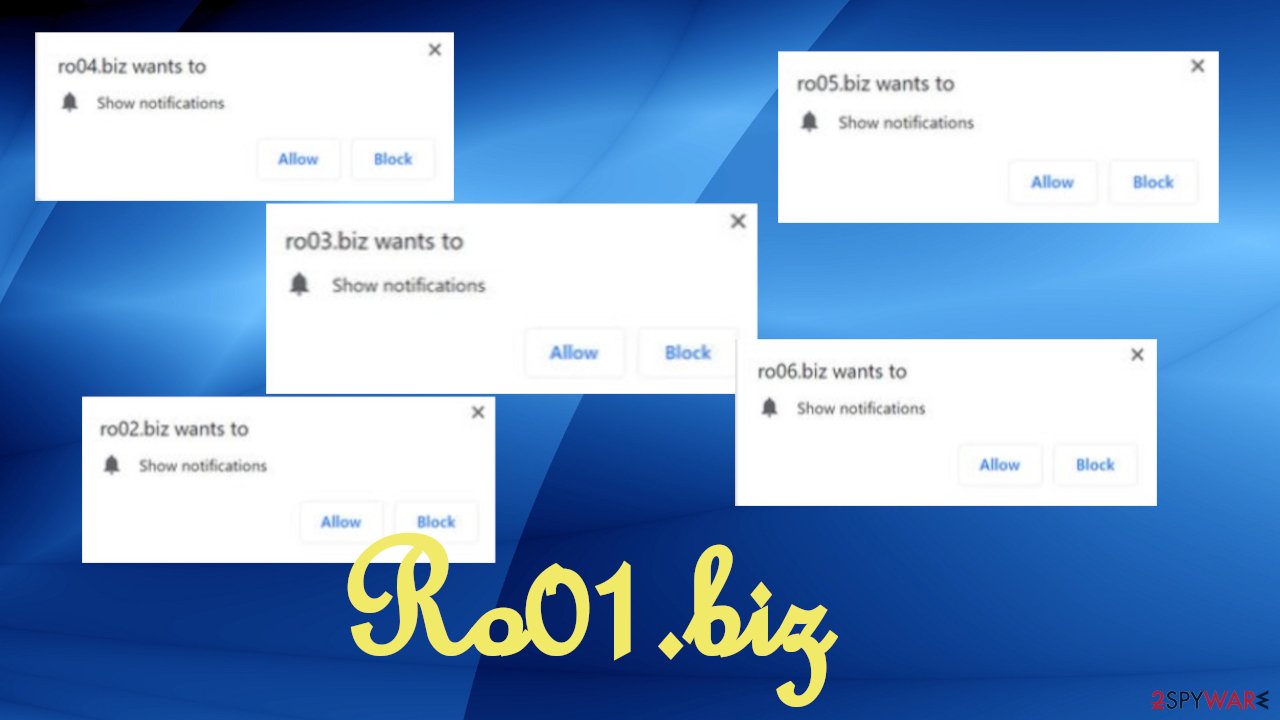
A quick tutorial to remove Ro01.biz virus from any infected devices
If you see deceptive ads as notifications or suffer from redirects to dubious sites, that means your computer or cell phone has Ro01.biz virus on it. The same goes if you've clicked the Allow button on any other variations of this site. Although PUPs aren't as hazardous as malware, they can act as a gateway to it. That's why you should take action immediately.
Ro01.biz removal process is quite simple, but we're going to help you through it. First, open your security tool and update its virus database. When it has the latest signatures, perform a full system scan. Then eliminate any suspicious entries that the dependable anti-malware tool recommends.
Afterward, use our detailed guides below to remove Ro01.biz notifications from your favorite browser. And lastly, you should delete tracking cookies and restore any altered system files. To do that automatically, use a proper system tune-up tool.
You may remove virus damage with a help of FortectIntego. SpyHunter 5Combo Cleaner and Malwarebytes are recommended to detect potentially unwanted programs and viruses with all their files and registry entries that are related to them.
Getting rid of Ro01.biz. Follow these steps
Stop browser notifications
Remove unwanted notifications from Google Chrome (desktop):
- Open Google Chrome browser and go to Menu > Settings.
- Scroll down and click on Advanced.
- Locate Privacy and security section and pick Site Settings > Notifications.

- Look at the Allow section and look for a suspicious URL.
- Click the three vertical dots next to it and pick Block. This should remove unwanted notifications from Google Chrome.

Remove unwanted notifications from Google Chrome (Android):
- Open Google Chrome and tap on Settings (three vertical dots).
- Select Notifications.
- Scroll down to the Sites section.
- Locate the unwanted URL and toggle the button to the left (Off setting).

Remove unwanted notifications from Mozilla Firefox:
- Open Mozilla Firefox and go to Menu > Options.
- Click on Privacy & Security section.
- Under Permissions, you should be able to see Notifications. Click the Settings button next to it.

- In the Settings – Notification Permissions window, click on the drop-down menu by the URL in question.
- Select Block and then click on Save Changes. This should remove unwanted notifications from Mozilla Firefox.

Remove unwanted notifications from Safari:
- Click on Safari > Preferences…
- Go to the Websites tab and, under General, select Notifications.
- Select the web address in question, click the drop-down menu and select Deny.

Remove unwanted notifications from MS Edge:
- Open Microsoft Edge, and click the Settings and more button (three horizontal dots) at the top-right of the window.
- Select Settings and then go to Advanced.
- Under Website permissions, pick Manage permissions and select the URL in question.

- Toggle the switch to the left to turn notifications off on Microsoft Edge.

Remove unwanted notifications from MS Edge (Chromium):
- Open Microsoft Edge, and go to Settings.
- Select Site permissions.
- Go to Notifications on the right.
- Under Allow, you will find the unwanted entry.
- Click on More actions and select Block.

Remove unwanted notifications from Internet Explorer:
- Open Internet Explorer, and click on the Gear icon at the top-right of the window.
- Select Internet options and go to the Privacy tab.
- In the Pop-up Blocker section, click on Settings.
- Locate web address in question under Allowed sites and pick Remove.

Uninstall from Windows
Instructions for Windows 10/8 machines:
- Enter Control Panel into Windows search box and hit Enter or click on the search result.
- Under Programs, select Uninstall a program.

- From the list, find the entry of the suspicious program.
- Right-click on the application and select Uninstall.
- If User Account Control shows up, click Yes.
- Wait till uninstallation process is complete and click OK.

If you are Windows 7/XP user, proceed with the following instructions:
- Click on Windows Start > Control Panel located on the right pane (if you are Windows XP user, click on Add/Remove Programs).
- In Control Panel, select Programs > Uninstall a program.

- Pick the unwanted application by clicking on it once.
- At the top, click Uninstall/Change.
- In the confirmation prompt, pick Yes.
- Click OK once the removal process is finished.
Delete from macOS
Remove items from Applications folder:
- From the menu bar, select Go > Applications.
- In the Applications folder, look for all related entries.
- Click on the app and drag it to Trash (or right-click and pick Move to Trash)

To fully remove an unwanted app, you need to access Application Support, LaunchAgents, and LaunchDaemons folders and delete relevant files:
- Select Go > Go to Folder.
- Enter /Library/Application Support and click Go or press Enter.
- In the Application Support folder, look for any dubious entries and then delete them.
- Now enter /Library/LaunchAgents and /Library/LaunchDaemons folders the same way and terminate all the related .plist files.

Uninstall from Android
Uninstall unwanted programs from Android device:
- Go to Settings -> Apps/Applications.
- Expand the full list of the installed apps.
- Scroll through the list and tap on a suspicious application once.
- Tap on it and select Uninstall.

- Reboot the device.
Clear Storage and data files on Android from Google Chrome or other apps:
- Go to Settings > Apps/Applications.
- Expand the full list of the installed apps.
- Tap on Chrome and select Storage & cache.
- Clear storage and clear cache of the app.

If you are seeing ads on top of other apps but are not sure what is causing it, perform the following steps:
- Go to Apps/Applications.
- Tap Advanced.
- Select Special App access.
- Tap on Display over other apps.

- Eliminate apps with these access rights enabled.
Remove from Microsoft Edge
Delete unwanted extensions from MS Edge:
- Select Menu (three horizontal dots at the top-right of the browser window) and pick Extensions.
- From the list, pick the extension and click on the Gear icon.
- Click on Uninstall at the bottom.

Clear cookies and other browser data:
- Click on the Menu (three horizontal dots at the top-right of the browser window) and select Privacy & security.
- Under Clear browsing data, pick Choose what to clear.
- Select everything (apart from passwords, although you might want to include Media licenses as well, if applicable) and click on Clear.

Restore new tab and homepage settings:
- Click the menu icon and choose Settings.
- Then find On startup section.
- Click Disable if you found any suspicious domain.
Reset MS Edge if the above steps did not work:
- Press on Ctrl + Shift + Esc to open Task Manager.
- Click on More details arrow at the bottom of the window.
- Select Details tab.
- Now scroll down and locate every entry with Microsoft Edge name in it. Right-click on each of them and select End Task to stop MS Edge from running.

If this solution failed to help you, you need to use an advanced Edge reset method. Note that you need to backup your data before proceeding.
- Find the following folder on your computer: C:\\Users\\%username%\\AppData\\Local\\Packages\\Microsoft.MicrosoftEdge_8wekyb3d8bbwe.
- Press Ctrl + A on your keyboard to select all folders.
- Right-click on them and pick Delete

- Now right-click on the Start button and pick Windows PowerShell (Admin).
- When the new window opens, copy and paste the following command, and then press Enter:
Get-AppXPackage -AllUsers -Name Microsoft.MicrosoftEdge | Foreach {Add-AppxPackage -DisableDevelopmentMode -Register “$($_.InstallLocation)\\AppXManifest.xml” -Verbose

Instructions for Chromium-based Edge
Delete extensions from MS Edge (Chromium):
- Open Edge and click select Settings > Extensions.
- Delete unwanted extensions by clicking Remove.

Clear cache and site data:
- Click on Menu and go to Settings.
- Select Privacy, search and services.
- Under Clear browsing data, pick Choose what to clear.
- Under Time range, pick All time.
- Select Clear now.

Reset Chromium-based MS Edge:
- Click on Menu and select Settings.
- On the left side, pick Reset settings.
- Select Restore settings to their default values.
- Confirm with Reset.

Remove from Mozilla Firefox (FF)
Remove dangerous extensions:
- Open Mozilla Firefox browser and click on the Menu (three horizontal lines at the top-right of the window).
- Select Add-ons.
- In here, select unwanted plugin and click Remove.

Reset the homepage:
- Click three horizontal lines at the top right corner to open the menu.
- Choose Options.
- Under Home options, enter your preferred site that will open every time you newly open the Mozilla Firefox.
Clear cookies and site data:
- Click Menu and pick Settings.
- Go to Privacy & Security section.
- Scroll down to locate Cookies and Site Data.
- Click on Clear Data…
- Select Cookies and Site Data, as well as Cached Web Content and press Clear.

Reset Mozilla Firefox
If clearing the browser as explained above did not help, reset Mozilla Firefox:
- Open Mozilla Firefox browser and click the Menu.
- Go to Help and then choose Troubleshooting Information.

- Under Give Firefox a tune up section, click on Refresh Firefox…
- Once the pop-up shows up, confirm the action by pressing on Refresh Firefox.

Remove from Google Chrome
Delete malicious extensions from Google Chrome:
- Open Google Chrome, click on the Menu (three vertical dots at the top-right corner) and select More tools > Extensions.
- In the newly opened window, you will see all the installed extensions. Uninstall all the suspicious plugins that might be related to the unwanted program by clicking Remove.

Clear cache and web data from Chrome:
- Click on Menu and pick Settings.
- Under Privacy and security, select Clear browsing data.
- Select Browsing history, Cookies and other site data, as well as Cached images and files.
- Click Clear data.

Change your homepage:
- Click menu and choose Settings.
- Look for a suspicious site in the On startup section.
- Click on Open a specific or set of pages and click on three dots to find the Remove option.
Reset Google Chrome:
If the previous methods did not help you, reset Google Chrome to eliminate all the unwanted components:
- Click on Menu and select Settings.
- In the Settings, scroll down and click Advanced.
- Scroll down and locate Reset and clean up section.
- Now click Restore settings to their original defaults.
- Confirm with Reset settings.

Delete from Safari
Remove unwanted extensions from Safari:
- Click Safari > Preferences…
- In the new window, pick Extensions.
- Select the unwanted extension and select Uninstall.

Clear cookies and other website data from Safari:
- Click Safari > Clear History…
- From the drop-down menu under Clear, pick all history.
- Confirm with Clear History.

Reset Safari if the above-mentioned steps did not help you:
- Click Safari > Preferences…
- Go to Advanced tab.
- Tick the Show Develop menu in menu bar.
- From the menu bar, click Develop, and then select Empty Caches.

After uninstalling this potentially unwanted program (PUP) and fixing each of your web browsers, we recommend you to scan your PC system with a reputable anti-spyware. This will help you to get rid of Ro01.biz registry traces and will also identify related parasites or possible malware infections on your computer. For that you can use our top-rated malware remover: FortectIntego, SpyHunter 5Combo Cleaner or Malwarebytes.
How to prevent from getting adware
Stream videos without limitations, no matter where you are
There are multiple parties that could find out almost anything about you by checking your online activity. While this is highly unlikely, advertisers and tech companies are constantly tracking you online. The first step to privacy should be a secure browser that focuses on tracker reduction to a minimum.
Even if you employ a secure browser, you will not be able to access websites that are restricted due to local government laws or other reasons. In other words, you may not be able to stream Disney+ or US-based Netflix in some countries. To bypass these restrictions, you can employ a powerful Private Internet Access VPN, which provides dedicated servers for torrenting and streaming, not slowing you down in the process.
Data backups are important – recover your lost files
Ransomware is one of the biggest threats to personal data. Once it is executed on a machine, it launches a sophisticated encryption algorithm that locks all your files, although it does not destroy them. The most common misconception is that anti-malware software can return files to their previous states. This is not true, however, and data remains locked after the malicious payload is deleted.
While regular data backups are the only secure method to recover your files after a ransomware attack, tools such as Data Recovery Pro can also be effective and restore at least some of your lost data.















